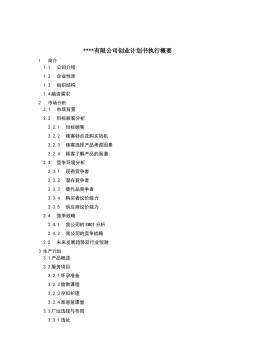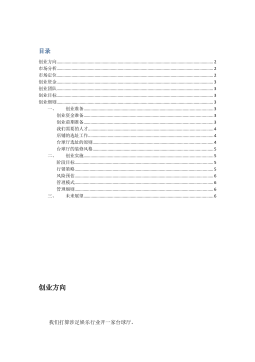基于语料库的理工科大学生英语口语话轮转换策略
VIP免费
i
Acknowledgements
I would like to take this chance to express my heart felt thanks to those who are
involved in my postgraduate period. As for this thesis, it can be considered as the
most challenging work during this period, which seemed so hard for me at the very
beginning. However, thanks to the following people, this thesis has been finally
completed.
First and foremost, I owe my deepest gratitude to Professor Liu Qin, my
supervisor, who not only inspired me in terms of the selection of the topic, but also
gave me insightful suggestions as well as all possible helps, sparing no pains to
correct all the drafts till the completion. What’s more important is that she gave me a
lot mental support whenever I felt frustrated and hesitant, which kept me move on.
Deep appreciation also goes to Mr Pan Mingwei from Shanghai International
Studies Univerisity. He spared his valuable time instructing me a lot about corpus, and
offered me many helpful suggestions on selection of the topic the topic and during the
process of writing.
At the same time, my thanks go equally to Professor He Anping from South
China Normal University and Mr Zhen Fengchao from Shanghai Jiaotong University,
who gave me important advice in the conference in Dalian, which has inspired me a
lot.
I would also like to give my thanks to the other project partners, without their
effort, I cannot have collected so much data. Meanwhile, I would like to show my
appreciation to those students who have seriously taken part in our videoing.
Last but not least, I am so much indebted to my family. Especially, I feel grateful
for my husband—Guobo’s love, constant support and encouragement throughout the
postgraduate period, especially during the process of the thesis writing.
ii
ABSTRACT
Turn is a primary concept in conversations and turn-taking plays a fundamental
role in the organization of a conversation. The analysis of turn-taking was started by
Sacks et al. in the 1970s, who proposed a basic model for turn-taking organization.
Later on, researchers analyzed it from various perspectives. In the past 20 years,
researches of turn-taking have also prospered in China, especially those on foreign
language teaching.
Nevertheless, there has been little empirical study in this field so far, almost none
on how turn-taking strategies affect the overall communicative competence of a
particular group of Chinese students. The author, therefore, probes into analyzing the
status quo of turning-taking strategies of Chinese Science and Engineering Majors
(SEMs), a group of students who are important and representative, with Interlanguage
Contrastive Analysis (CIA).
Data employed in this paper are 60 conversations collected from several colleges
of science and engineering at different levels all over China. Conversation topics are
mostly on students’ life and study. The subjects selected in this research aims at
ensuring the representativeness and persuasiveness. The author compares the students’
turn-taking strategies in order to get their particular features and deficiencies, thus
enhancing students’ communicative competence and providing backwash for oral
English class teaching.
By comparison and analysis, the author reaches the following findings.
1) The study shows that Chinese SEMs are relatively weak in using turn-taking
strategies as a whole, and have not satisfactorily achieved the basic requirements
mentioned in College English Curriculum Requirements (2007): “Have mastered
basic conversational strategies, for example, initiating maintaining and closing a
conversation, and asking people to repeat what they have said”. The existing problems
mainly include lack of conversation management, overuse of “I-Perspective”, and
negative language transfer, etc.
iii
2)As for the total turns in the conversations, there does not exist significant
difference among students of different levels or from different universities. But as for
the use of discourse markers (DMs)— those signal words used for turn-taking,
holding, and yielding, high-level students perform much better than those middle and
low-level ones. So teachers are suggested to follow the principle of providing
different guidance for different groups of students and instructing them in accordance
with their aptitude so as to improve students’ oral English proficiency as a whole.
At the end of the thesis, the author provides some suggestions for oral English
teaching. First of all, universities for science and engineering should work out their
own English curriculum requirements in accordance with their specific needs and
situations. In the respect of oral English teaching, teachers should pay more attention
to students’ communicative abilities, instead of only instructing language knowledge.
Oral English teaching cannot rely on one particular textbook. Teachers should make
use of various resources, like English movies and corpus both in China and abroad.
Their attention should be focused on the authentic language.
Although this thesis has gone through so many modifications, it has some
limitations and is far from perfect. The author hopes that more researches in this field
will do further studies, thus improving College oral English teaching together.
Key words: corpus, Chinese Science and Engineering Majors (SEMs),
oral English, turn-taking, discourse markers (DMs)
iv
摘 要
话轮是日常会话的基本结构单位。话轮转换是会话的特点之一,也是会话分
析的核心问题,如何组织和转换话轮对于会话效果起着十分重要的作用。自 20
世纪 70 年代,美国社会学家 Sacks,Schegloff & Jefferson 等开拓了话轮转换研
究的先河,国外学者们一直在对这方面进行研究。我国学术界对话轮转换也进行
了不少有益探讨,尤其是在外语教学方面的研究。
就语料库对提高英语口语的方面来看,目前国内的研究对话轮转换策略的实
证研究较少,而且鲜有对某一特殊群体口语交际中的这方面的研究。本文运用基
于语料库的中介语对比分析法,就理工科大学生这一相对特殊而重要同时又颇具
代表性的学生群体的话轮转换现状进行分析。
本文研究中所用到的语料(共 60 组学生对话)来源于全国五所不同层次和
不同地域的理工科院校,学生的专业也各有所区别,话题主要围绕学生日常学习
和生活开展。其中所选对象的男女比例和各自的英语水分布大致持平,保证了语
料的代表性和说服力。笔者综合分析并对比他们的话轮转换策略,得出该群体学
生话轮转换的特点及不足之处及其对英语口语交际能力的影响,以期对英语口语
课堂教学提供有价值的反馈信息。
通过对比研究分析,笔者发现:
1) 理工科大学生口语交际中的话轮转换策略的使用整体较薄弱,没有完全达到
《大学英语课程教学要求》(2007)提出的要求:掌握基本会话策略,如开始、
继续或结束会话,让人重复所说内容等。存在的问题主要为缺乏会话管理策略、
过于以说话者自我为中心及母语的负迁移等。
2)重点院校与非重点院校的学生在话轮转换的使用整体上不存在明显的差异,
但是就语篇标记语(discourse markers)—— 用于话轮获取、维系及放弃的信
号词的使用来看,高水平学生和中低水平学生则存在显著差异,有待在日后的教
学中因材施教,以逐步缩小差距,提高整体学生的口语表达水平。
在论文末笔者提出了一些对教学的反馈建议,以供参考。首先,理工科院校
应结合学校自身特点、学生水平以及院校定位确定与之相适应的英语课程教学目
v
标。在口语教学方面,教师要注重培养学生交际能力的方法,避免脱离具体的语
言环境纯粹地传授语言知识,应重点指导学生如何根据具体的情景使用语言。在
口语教材的选择方面也应慎重,不妨适当引用本族语者实景对话的视频或音频进
行教学,也可借鉴国内外的语料库,利用真实的语料进进教学。
鉴于诸多原因,此项研究尚有诸多有待完善之处。笔者希望今后有更多该领
域的专家一起进行深入研究,共同促进大学英语口语教学的发展。
关键词:语料库; 中国理工科大学生; 英语口语; 话轮转换; 语篇标
记语
vi
List of Acronyms
ANOVA
Analysis of Variance
CA
Conversation Analysis
CET4/6
College English Test Band 4 and 6
CIA
Contrastive Interlanguage Analysis
CLA
Communicative Language Ability
COLSEC
College Learners’ Spoken English Corpus
DM
Discourse Markers
ICE-GB-Spoken
International-Great Britain-Spoken
NNS
Non-Native Speakers
NS
Native Speakers
POS
Part of Speech
SEMs
Science and Engineering Majors
SLA
Second Language Acquisition
SPSS
Statistical Package for Social Science
TAC
Turn-Allocation Component
TCC
Turn-Constructional Component
TCU
Turn-Constructional Unit
TRP
Transition Relevance Place
vii
List of Tables
Table 3.1
Demographic Information of Research Subjects……………………...22
Table 3.2
Topics for Discussion………………………………………………….23
Table 3.3
Discourse Markers for Turn-taking in this Study……………………..24
Table 3.4
Effect of Student Level on the Total Turns……………………………29
Table 3.5
Effect of School Level on the Total Turns…………………………….31
Table 3.6
Effect of Gender on the Total Turns…………………………………..32
Table 3.7
Descriptive Features of total Number of the Use of DMs by Students of
Different Levels………………………………………………………..33
Table 3.8
Effect of Student Level on the Total Use of DMs……………………..33
Table 3.9
Difference of Total Use of DMs by Students of Different Levels…….33
Table 3.10
Descriptive Features of total Number of the Use of DMs by Students
from Different School-levels…………………………………………..34
Table 3.11
Effect of School-level on the Total Use of DMs………………………34
Table 3.12
Descriptive Features of total Number of the Use of DMs by Females and
Males……………………………………………………………..........34
Table 3.13
Effect of Gender on the Total Use of DMs…………………………….35
Table 3.14
Effect of Student-level on the use of particular DMs………………….35
Table 3.15
Effect of Student-level on the Use of Uptakes by Students of Different
Levels…………………………………………………………………..36
Table 3.16
Effect of Student-level on the Use of DMs for Turn-holding by Students
of Different levels……………………………………………………...36
Table 3.17
Effect of School-level on the Use of Particular DMs………………… 37
Table 3.18
Effect of School-level on the Use of Particular DMs………………….37
Table 4.1
Descriptive Features of the Use of uptakes……………………………40
Table 4.2
Use of Small Words by Different Learner Groups…………………….43
Table 4.3
Descriptive Features of the Use of uptakes……………………………44
Table 4.4
Descriptive Features of the Use of backchannels……………………...46
Table 4.5
Descriptive Features of the Use of DMs for Turn-holding……………48
Table 4.6
An Example to Show the Turn-yielding Strategies……………………52
viii
List of Figures
Figure 2.1
Bachman’s CLA Model……………………………………………….5
Figure 2.2
CIA………………………………………………………………….16
Figure 3.1
Window of Concordance with AntConc 3.2………………………...27
Figure 3.2
Descriptive Features of Total Turns in the Study…………………...28
Figure 3.3
Descriptive Features of Total Turns by High-level Students………..28
Figure 3.4
Descriptive Features of Total Turns by Middle-level Students……..29
Figure 3.5
Descriptive Features of Total Turns by Low-level Students………..29
Figure 3.6
Descriptive Features of Total Turns by Students from Key
Universities………………………………………………………….30
Figure 3.7
Descriptive Features of Total Turns by Students from Local
Universities…………………………………………………………..30
Figure 3.8
Descriptive Features of Total Turns by Female Students……………31
Figure 3.9
Descriptive Features of Total Turns by Male Students……………...31
Figure 3.10
Descriptive Features of total Number of the Use of DMs…………..32
Figure 4.1
Concordance Lines of the Use of up3……………………………….40
Figure 4.2
Concordance Lines of the Use of up4……………………………….41
Figure 4.3
Concordance Lines of the Use of up2……………………………….42
Figure 4.4
Concordance Lines of the Use of up7……………………………….42
Figure 4.5
Concordance Lines of the Use of ap1……………………………….45
Figure 4.6
Concordance Lines of the Use of ap4…………………………….....46
Figure 4.7
Concordance Lines of the Use of bc1……………………………….47
Figure 4.8
Concordance Lines of the Use of ht7………………………………..49
Figure 4.9
Concordance Lines of the Use of ht3………………………………..49
Figure 4.10
Concordance Lines of the Use of ht5………………………………..50
Figure 4.11
Concordance Lines of the Use of ht1………………………………..51
摘要:
展开>>
收起<<
iAcknowledgementsIwouldliketotakethischancetoexpressmyheartfeltthankstothosewhoareinvolvedinmypostgraduateperiod.Asforthisthesis,itcanbeconsideredasthemostchallengingworkduringthisperiod,whichseemedsohardformeattheverybeginning.However,thankstothefollowingpeople,thisthesishasbeenfinallycompleted.Fir...
相关推荐
-
跨境电商商业计划书模版VIP免费
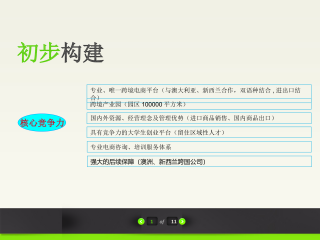
 2025-01-09 27
2025-01-09 27 -
跨境电商方案范文VIP免费
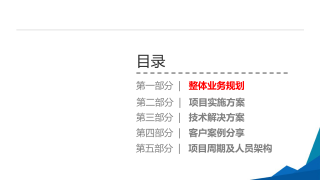
 2025-01-09 14
2025-01-09 14 -
创业计划书VIP免费
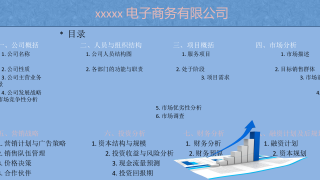
 2025-01-09 18
2025-01-09 18 -
xx生鲜APP计划书VIP免费

 2025-01-09 12
2025-01-09 12 -
跨境电商创业园商业计划书(盈利模式)VIP免费
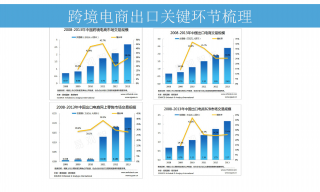
 2025-01-09 8
2025-01-09 8 -
跨境电商计划书VIP免费

 2025-01-09 13
2025-01-09 13 -
绿色食品电商平台项目计划书VIP免费

 2025-01-09 22
2025-01-09 22 -
农产品电子商务商业计划书VIP免费

 2025-01-09 9
2025-01-09 9 -
农村电商平台商业计划书VIP免费

 2025-01-09 13
2025-01-09 13 -
生鲜商城平台商业计划书VIP免费
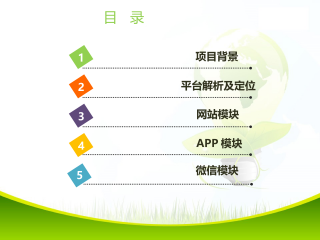
 2025-01-09 21
2025-01-09 21
作者:牛悦
分类:高等教育资料
价格:15积分
属性:73 页
大小:1.6MB
格式:PDF
时间:2024-11-19


